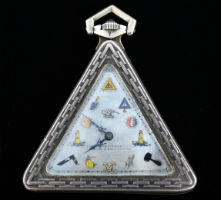
LONDON – It was Groucho Marx who famously said he wouldn’t want to be a member of a club that would accept people like him as a member, and I share the sentiment. But as a collector, I confess to being fascinated by the raft of Freemasonry memorabilia that turns up with frequent regularity in antiques fairs and auctions. Should I start collecting it? Writing this might help me decide.
For starters, Masonic collectables are not a fashionable commodity, so there’s not a massive amount of competition among rival buyers and bidders. And because it’s a movement that has been around for centuries, some say its origins date back to the 1400s, there is no shortage of objects to seek out.
Most readily found collectables will date from the 19th and 20th centuries, which means that prices are affordable for most things apart from gold medals and badges of office. I suspect, however, they are purchased more often for the melting pot than the collector’s cabinet, given the high price of the metal these days.
What to collect relies mostly on what appeals to the individual. To try to collect examples of everything would need a sizable bank balance and an equally large space to display it all. A textiles collector might well be interested in the ceremonial robes, aprons and regalia, so often consigned to a suitcase in the attic by his family after the death of a father or grandfather.
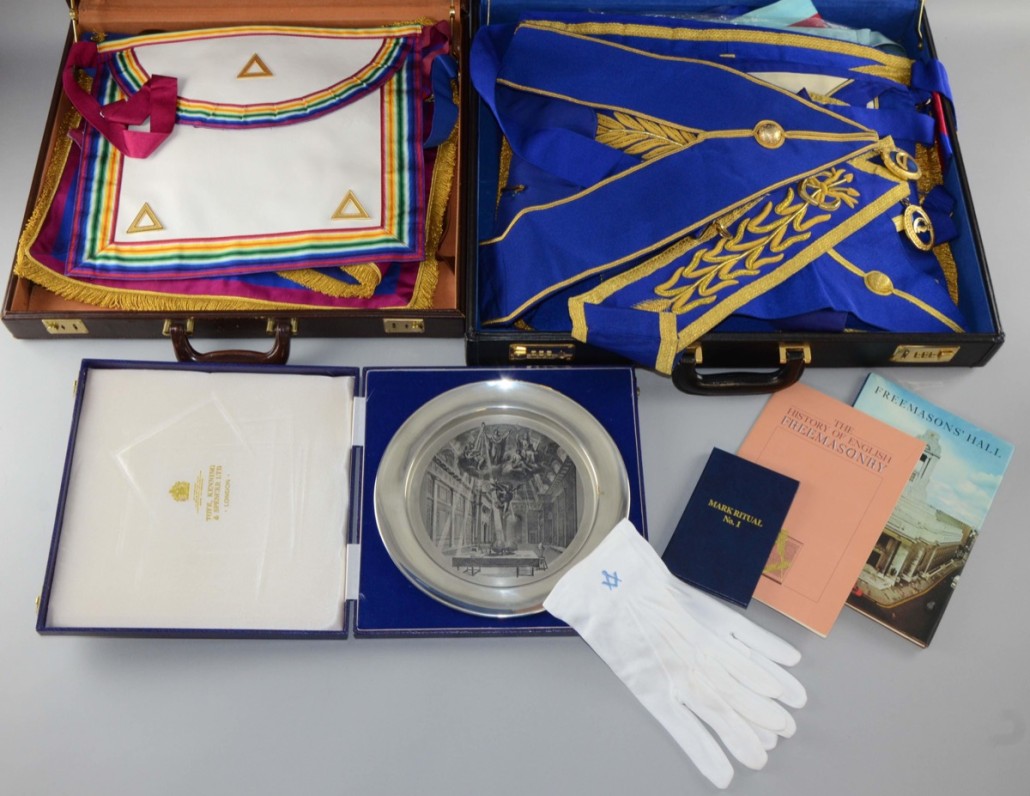
Stamps, clocks, watches, snuff boxes, ceramics, medals, jewelry, furniture, paintings and prints at all price points attract a following and they are readily spotted. Look for the unmistakeable symbols representing Freemasonry: the set square and set of compasses, the tools of the stonemason, often depicted with the letter “G” – standing for “the Great Architect of the Universe” and Geometry and the all-seeing eye, known in Freemasonry as the Eye of Providence.
In 1837, the first year of Queen Victoria’s reign, there were about 500 Masonic lodges in the British Empire. By the time she died in 1901, there were nearly 2,000, their members all needing ceremonial costumes and accessories so these years also saw the development of specialist retailers who adopted modern marketing techniques to reach their audience.

One among many was George Kenning, the son of an East End oyster seller, who made and sold a range of products from his shops across Britain and by mail order business with customers in the United States.
So, what to collect. The Masonic apron is a member’s badge of office and is derived from the protective lambskin apron worn by stonemasons. Formed as a perfect square, its four right angles represent purity, truth, sincerity and honesty, and a plain white apron denotes a new member who has completed the first of three ceremonies, called degrees.
A sky blue apron with rosettes on the lower corners, the Fellowcraft apron, is awarded to those who have achieved two degrees, while that of a Master Mason has a third rosette to form a triangle. As he progresses through the ranks, the apron becomes more elaborate with an inverted letter ‘T’ replacing the rosettes for lodge masters and dark blue with gold ribbon edging denotes more senior ranks.
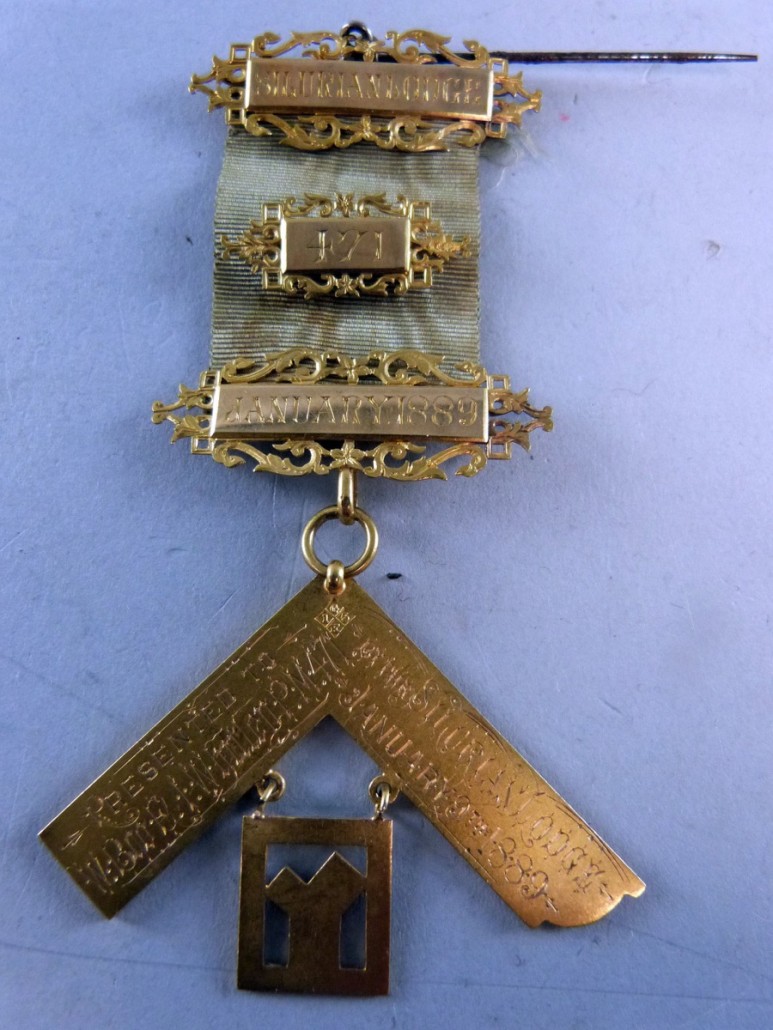
Masonic jewels, actually medallions suspended from a pin and ribbon, are among the most plentiful collectible with literally hundreds of types available, some more rare and valuable than others. Members who donate money become Stewards for a year and are entitled to wear the relevant medal. A member serving twice as a steward for different charities is eligible for the Grand Lodge charity jewel.
The practice originates from collections taken following a celebratory meal in the late 1700s. Red ribbons denote money raised for the Royal Masonic Benevolent Institution; white for the Royal Masonic Institution for Girls and blue for the Royal Masonic Institution for Boys. Designs differ each year, based usually on the coat of arms of the Appeal President for the year.

Members of a lodge that has operated continuously for 100 years are entitled to wear centenary jewels and bars for bicentenaries, the designs standardized in 1865 with a snake biting its tail, symbolising eternity, a rope knot without an end and “C”, the Latin letter for 100. They are usually made of silver with sky blue ribbon and enameling.
Founders’ jewels were presented to the first members of a new lodge, older examples being made in gold and sometimes set with diamonds, often bearing the name of the individual brethren, while those after 1940 are generally in silver and occasionally accompanied by tie pins and cuff links.
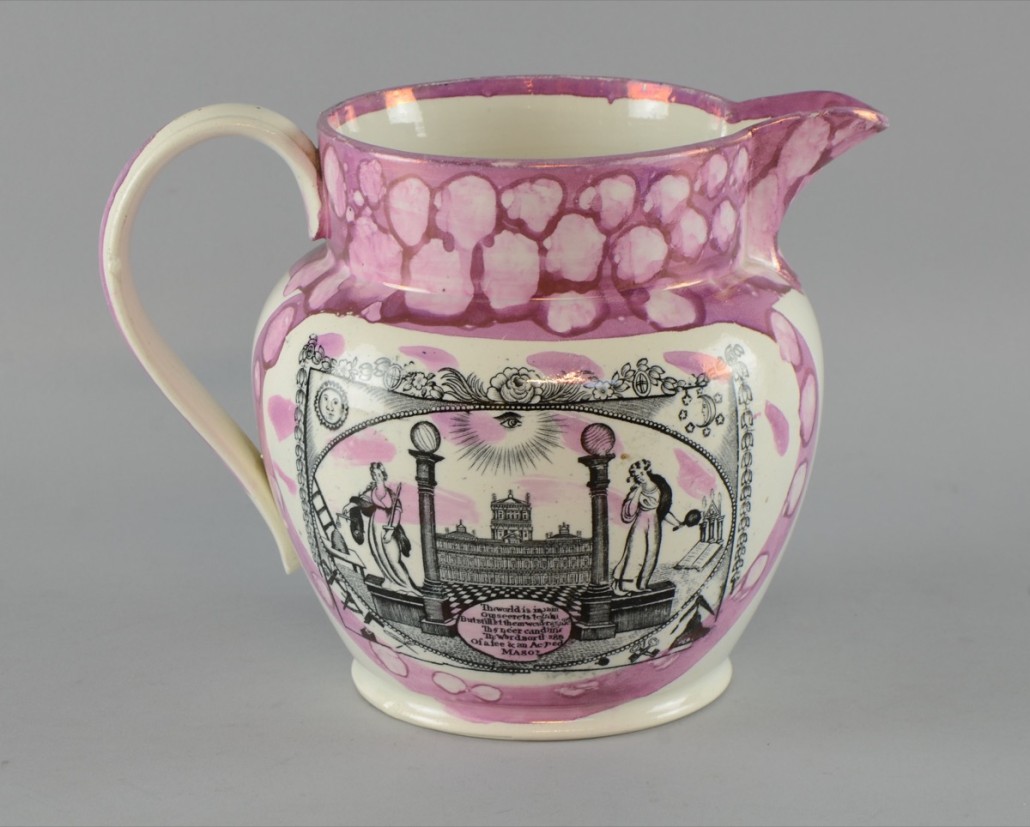
Past Masters’ jewels presented to those who have progressed through the years to become eligible for election as Worshipful Master are sought after by collectors. Generally gold and sometimes set with diamonds, the design includes a free hanging set square and a small rectangular plaque denoting “quintessence of perfection and truth.”
Interestingly, a collectors’ club called Jewels of the Craft is for Masonic members only who can join only by invitation. Selling and swapping with fellow members is regulated by strict rules.
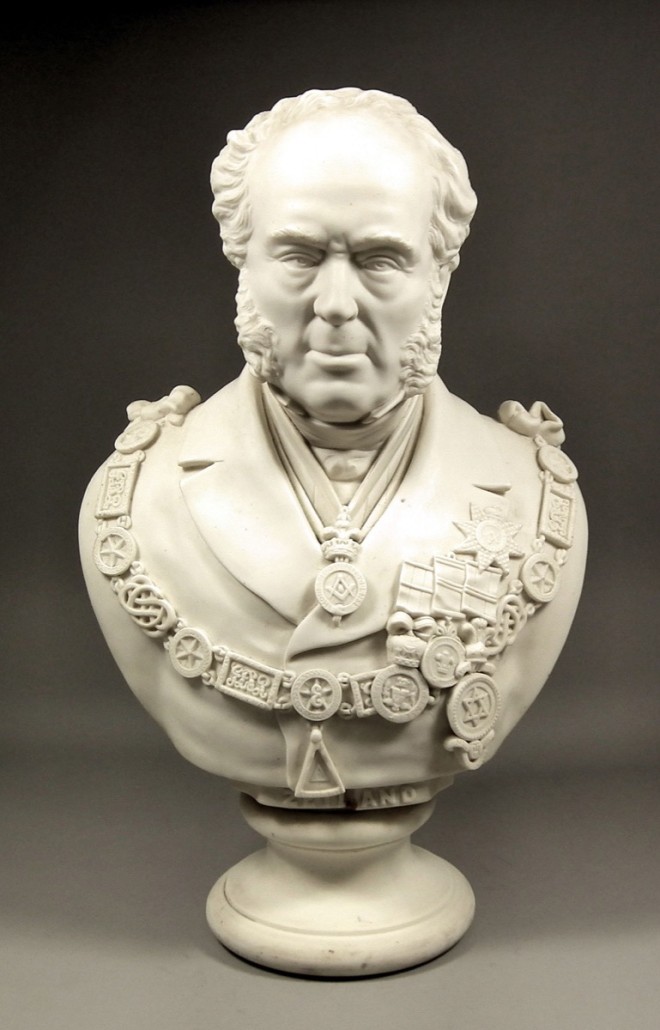
Masonic glass in general, and shot or firing glasses in particular, would be my favorite collecting medium, but prices for early material can be steep. Easily identifiable by the same engraved symbols, a prolific amount of glassware would be kept at a lodge for dinner, wine and toasts following the Masonic ritual in the temple.
The dumpy little firing glasses take their name from the loud retort mimicking gunfire they produce when banged down on a table top following a toast. The best, and earliest, are blown freehand in clear glass with heavy base, and pontil marks either ground out or left rough where the finished glass was snapped off the pontil rod.
Given this rough treatment at the hands of men making merry, many were broken in the process, making survivors relatively scarce. Find Nailsea or Bristol blue Masonic glass or those decorated in enamels in Newcastle upon Tyne by the family of William Beilby (1740-1819) and you’ll think it’s Christmas.
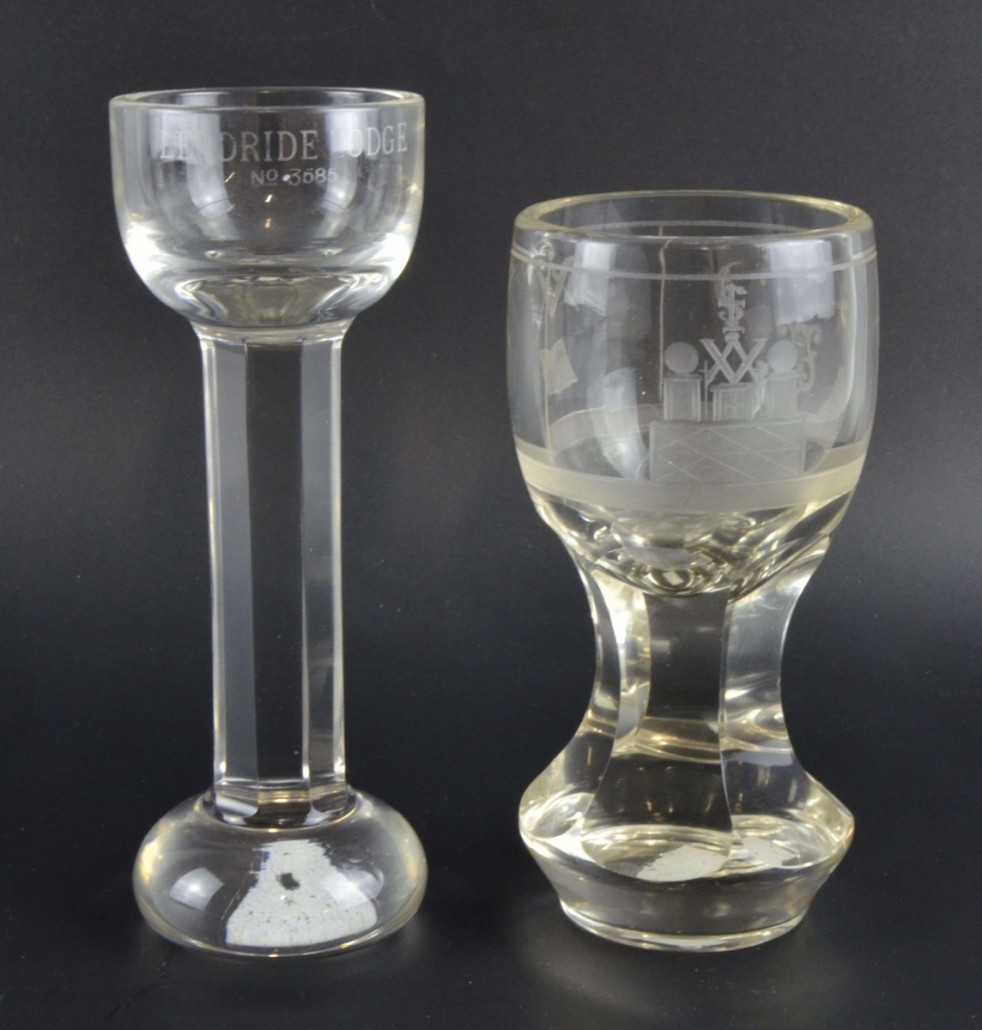
The newcomer to collecting would do well to visit his local museum, which is likely to have a display of objects from a local lodge. The rarest and most special can be seen in the museums at Freemasons’ Halls in Manchester and London. In each location, glass-fronted display cabinets display historically important uniforms and regalia.
The London hall in Great Queen Street, WC2 is the headquarters of the United Grand Lodge of England and the display there includes objects belonging to famous and Royal Freemasons including Winston Churchill and Edward VII.
___
By CHRISTOPHER PROUDLOVE


